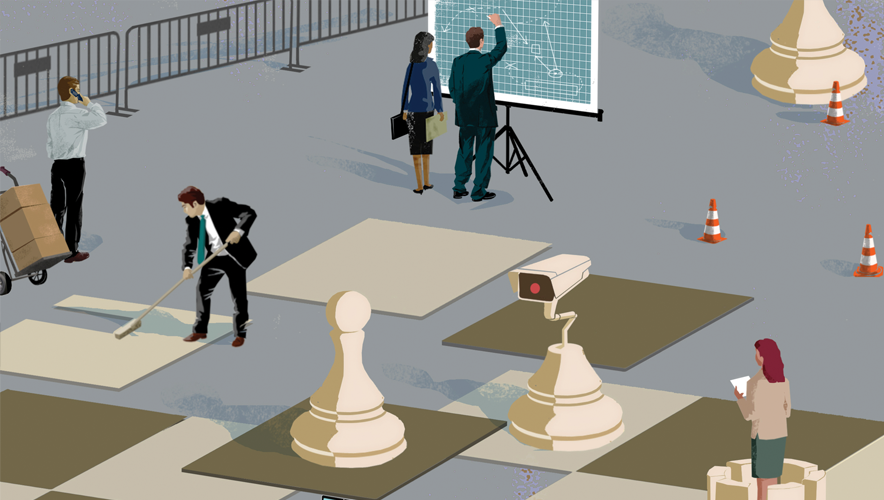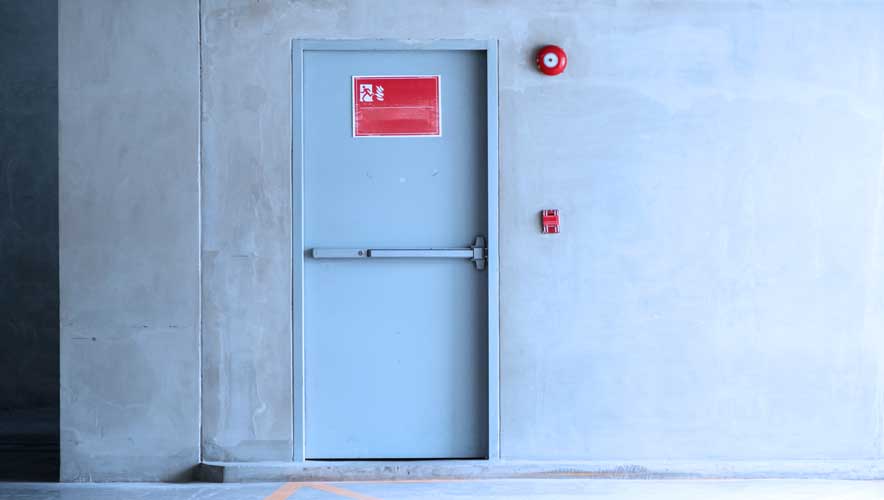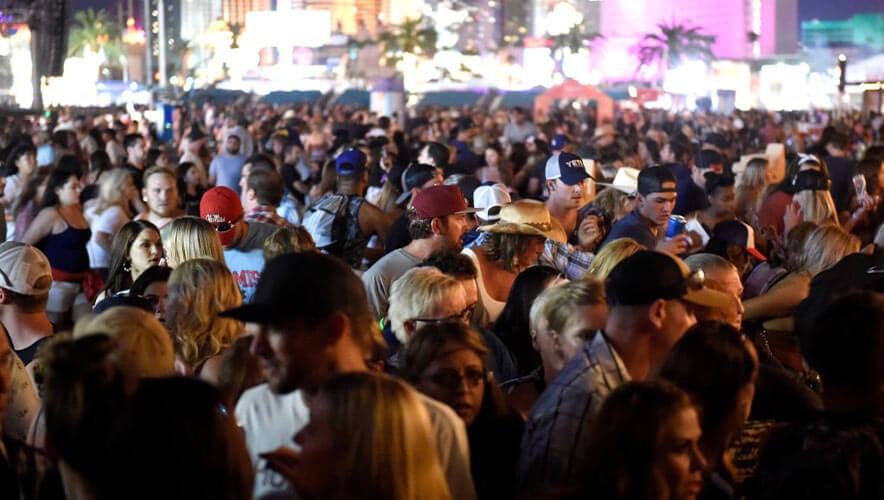Preparing for Protests
Riots in Ferguson, Baltimore, and Berkeley. Disruptions at airports coast to coast. Pipeline site blockades and sabotage. Out-of-control town hall meetings and campus speeches.
These stories have been filling headlines and social media feeds at a seemingly constant pace. Less trumpeted, however, are the protests that fizzled out or were kept calm thanks to smart security planning. What makes the difference between a protest that boils over into violence and major disruption and a protest that is steered, subtly or boldly, toward a peaceful outcome?
A security director may not be able to determine in advance whether a protest will be peaceful or legal, but it is not his or her task to stop people from protesting. Therefore, when a company is targeted by protesters or is expected to be in their path, the security director should focus on traditional security concerns: protecting the company’s people, property, information, and reputation.
In a protest or riot situation, the protective effort takes on special urgency and requires different methods from those employed during normal operations. Protests and riots are unstable, high-tension events that can have outcomes as serious as loss of life, severe personal injuries, major property damage, and complete stoppage of legitimate business activities.
Some situations call for a high-visibility security profile designed to discourage protesters from harming the company’s employees and property. In other types of protests, a low-key, low-visibility approach takes the wind out of the protesters’ sails. In all cases, a disciplined, documented approach leads to the best outcomes—both on-site and in court.
It may be difficult to convince senior management to spend money on planning and preparation if a protest does not seem imminent. However, showing coverage of recent protests that got out of control may clarify the ramifications of being unprepared. Images of burning buildings, looters, broken windows, and injured people on stretchers may provide a reminder of what can happen when inadequate precautions are taken.
ASSESSING CONFLICT
Security is not law enforcement. The goal is not to arrest protesters but to prevent problems. To address an upcoming protest or riot, it is essential to assess the threat based on intelligence collection. After gaining an understanding of the threat, the security director can choose a protective approach that best fits the situation, applying various concepts designed to calm the event and prevent harm.
Intelligence gathering. A large company with a well-developed security department may have enough skilled personnel to perform its own intelligence gathering, while a smaller security department may need outside help through a risk assessment firm that specializes in addressing protests and riots.
Whoever performs the intelligence collection should attempt to learn as much as possible about the adversary, including its prior tactics and level of aggression. Conducting online research, looking at social media, interviewing law enforcement personnel, and speaking with other companies that have faced the group in the past can increase understanding. Viewing videos of past incidents can provide insight into the adversary’s strategies and practices in the hope of countering them.
In some cases, invisible countersurveillance may be appropriate. For example, before a major international economic summit, the author’s security firm determined that a famous, well-organized activist group wanted to embarrass a company that was headquartered in the city. To protect that company, the author’s company put the facility under covert surveillance before the summit. The goal was to detect odd behavior, such as a car passing by the site multiple times to conduct advance work for protesters, or someone walking past the site and taking pictures or notes, possibly for planning a protest. Surveillance was also designed to covertly determine the best places for protesters to hang banners. The company then took steps to make those locations unavailable.
Surveillance and countersurveillance are not foolproof. Dedicated protesters are aware of surveillance techniques and have published guides for detecting and eluding them.
Planning. Intelligence collection should lead to some understanding of the adversary, which in turn should suggest an overall approach to protecting the site. However, finesse is required. In some cases, a high-visibility, high-security, high-deterrence approach is appropriate. If the protesters are known to be violent or the site is especially vulnerable, a strong approach may be called for. In many corporate settings, by contrast, a lower-profile, less-provocative approach is appropriate as a way to set expectations for peaceful behavior without doing anything to inflame the protesters.
Potential conflicts may be quelled through unpredictability. The company should generally not broadcast its security plans but should aim to keep protesters guessing. That way, they will not know what types of security measures to combat. For example, if there is a risk of insider collusion with the protest, the company can send workers home early, without any advance notice, to reduce opportunities for sabotage.
Calm can also be preserved through disciplined behavior by security staff during the protest. They should not engage in arguments with protesters or return any abusive language. Protesters like to goad security officers into inappropriate responses.
Officers should control any urge to confront the protesters and instead calmly use deflection and redirection, with phrases like, “I hear and understand what you are saying, but...” Insulting protesters emboldens and empowers them, whereas keeping cool strengthens an officer’s control over the situation and increases safety.
Make the company a less attractive target by removing loose items that could be used as projectiles from the property and locking trash receptacles to decrease locations where protesters could plant bombs or set fires. Moving company trucks inside the security perimeter prevents vandalism against those vehicles, and locking up propane and oil tanks on-site keeps protesters from igniting those items.
TAKING ACTION
If the intelligence-based risk assessment suggests a significant risk, security directors should assess the site’s physical security strengths and vulnerabilities and develop a well-rounded security plan—long before a security response is required. A detailed plan is needed regardless of whether the company itself or an outside security firm will be providing security during the incident.
Site assessment. Taking stock of a site’s strengths and vulnerabilities makes it possible to identify gaps that may need to be filled before the incident. Site strengths might include a high or isolated position, perimeter barriers, building access control, security video cameras and intrusion alarms, fire protection, emergency plans, and a security officer force. Vulnerabilities might include a low position, a lack of setback from the street, multiple routes in and out, and a location that is close to a riot’s point of origin.
Having completed the assessment, the company will have a better idea of what additional security measures are necessary to protect the site during the incident. For example, it might opt to strengthen key controls, establish an outer perimeter with a temporary chain link fence, increase protection of hazardous material areas, reposition security cameras, and trim foliage that could provide hiding places or help intruders scale fences.
The security director will likely need to work with senior management to make important policy decisions that will shape security operations during the incident. Issues to address include whether the business will continue to operate during the incident and whether security efforts will be high or low visibility. Management should also consider how to protect the company from the effects of the protest, including documenting illegal behavior by protesters, meeting legal obligations, protecting the corporate reputation, speaking with the media, and designating someone to address unexpected issues that arise during the protest or riot.
Put it in writing. Protests and riots can create chaotic conditions, and a variety of support documents are needed to bolster decision making and protect against legal ramifications. For example, the security effort may require a list of employees and contractors authorized to enter the site during the incident; detailed emergency and contingency plans; written rules on access control during the incident; a list of on-site hazardous material and its location; detailed external and internal maps of the facility for fire and police units; and forms for reporting violence and other crimes that occur during the incident.
The plan should specify required security staffing levels, fixed and roving security officer posts, task assignments, shift schedules, supervision responsibilities, command center arrangements, and evidence management procedures.
Education. The company needs a way to notify employees if an incident is underway or about to begin, as well as whether they should report to work and whom to contact for more information. It is also essential to establish communication channels with local law enforcement so the company will be informed of impending risks. In addition, the company may choose to contact distributors, customers, and vendors regarding whether business will continue during a protest or riot.
If the company’s usual security officers will be responsible for security during the incident, they will need training on how to act during the disturbance. Nonsecurity employees will also need training on how to conduct themselves and what to do if they show up to work and encounter a demonstration.
Resources. A large-scale event will require additional equipment, materials, and services that address temporary needs. These include visible marking of property lines and “No Trespassing/No Parking” signs, and additional lighting and cameras. To prepare for disaster response, procure identification badges for special service providers during the incident, emergency medical supplies, fire and HAZMAT response equipment, and food and sleeping arrangements if security personnel will be required to stay on-site for long periods.
The plan should require employees to wear identification badges at all times and clarify any changes to work access hours and locations. It should also specify how employees should report security concerns and protester offenses.
THE SPECTRUM OF SITUATIONS
During a full-scale riot, a high-level, clearly visible deterrent posture to protect life and property is usually most effective. If people are moving through a city in large numbers, burning cars and buildings and looting stores, a low-key approach to security—such as clearly marked property lines and “No Trespassing” signs—will likely fail.
If a company’s intelligence effort suggests that a riot may follow an upcoming event, such as a controversial court decision or a campus speech, or a recent event such as a shooting by police, the company should use high-profile security measures to set an expectation, namely that rioters should move on and not attack the company’s facility. The author’s firm was tasked with protecting industrial facilities during the 2015 Baltimore riots following the death of Freddie Gray while he was in police custody. The firm’s approach was to deter attacks—not combat them—by prominently deploying security officers and cameras.
A different technique was required when the author’s firm was tasked with protecting television news crews as they went about the city. Because rioters were all around and the client was a soft target, the author’s company kept a low profile, standing only an arm’s length away from reporters, watching the surroundings carefully, and standing ready to carry out the evacuation plan.
Disruptions at meetings. If protesters come to a town hall or annual shareholder meeting, the best approach is to send a positive message that event hosts expect the meeting to proceed in an orderly fashion. One approach is to mount temporary cameras on tripods or walls around the room. Mounting them makes them seem less aggressive than having a person hold each camera and point it at attendees. Large video monitors should be placed around the room, clearly showing participants that they are on camera, and a single local law enforcement officer should be visible on-site. Experience shows that difficult or disruptive people will not comply the first or second time they are asked to behave, but if the request is made properly, somewhere around the third or fourth time most people will comply.
Mass protests at company sites. Some special techniques for events such as protests against the Dakota Access Pipeline and the Atlantic Coast Pipeline include using high locations for photography, perhaps capturing multiple angles from a roof. Employee training on reporting threats and safe practices for driving to and from the site should be reinforced—especially what to do if followed when leaving. For legal protection, clearly mark property lines and take video of the act of posting “No Trespassing” signs in case they are torn down.
Sometimes the best approach is to remove protesters’ targets—this approach can minimize risk for all concerned. The author’s firm was asked to protect a corporate headquarters where a large-scale labor protest was expected. Only 10 to 15 police officers would be available to help deal with more than 1,000 protesters. To reduce opportunities for trouble, the company sent all its headquarters staff home, without warning, four hours before the protest was expected to start, and removed trash cans that could be thrown. To reduce protesters’ hope of good photo opportunities, the company’s main headquarters sign was covered and company trucks bearing the firm’s name were moved out of sight. Photographers were posted on the roof to document the event. These protection measures kept key assets safe.
Airport protests. Sometimes a disruptive protest can be prevented or dispersed by emphasizing its illegality. In January 2017, protesters opposed to federal immigration policy massed at numerous U.S. airports, blocking pedestrian and vehicle movement. Most airports allowed the protests to continue, but protesters who tried to assemble at Denver International Airport were turned away by police because they did not have a permit as required by airport regulations. Restrictions on speech activity at airports were upheld by the U.S. Supreme Court, which states that an airport can impose reasonable restrictions on protest activity.
The goal of security in an era of protests is a safe outcome—the avoidance of death, injury, destruction of property, the hindering of legitimate business activities, and damage to reputation.
Martin Herman is president and CEO of Special Response Corporation. He is a member of ASIS International and a past ASIS chapter chairman. He serves on the board of directors for the National Association of Security Companies.










